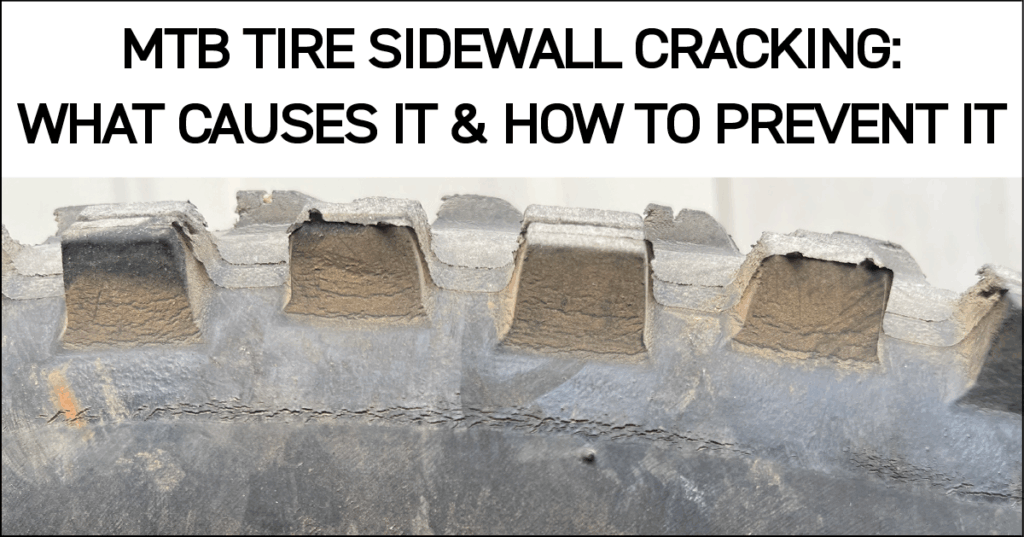You know that sinking feeling when you spot little cracks running down the side of your MTB tires after a ride? They don’t just look bad—they’re a warning sign your rubber’s starting to give up. Sidewall cracking is one of those issues every rider runs into sooner or later, and it can cut a good set of tires short if you don’t stay on top of it. The thing is, those splits usually come down to how (and where) you ride, how you store your bike, and how well you keep your setup dialed. The good news? With the right habits you can keep your tires rolling strong and keep those cracks from ruining your next ride.

Why Sidewalls Crack
If you’ve spotted little splits running along your tire’s sidewall, you’re looking at one of the most common signs of aging rubber. But it’s not just “old tire” syndrome—cracks usually show up for a mix of reasons:
UV Exposure – Parking your bike in the sun cooks the rubber and dries it out.
Low Tire Pressure – Running too soft can cause the casing to fold and stress in ways it wasn’t meant to.
Overuse & Mileage – Every big ride adds up; sidewalls flex thousands of times and eventually give in.
Harsh Cleaners – Strong degreasers or solvents strip away oils in the rubber, making it brittle.
Storage Mistakes – Leaving your bike in hot garages, cars, or damp basements speeds up breakdown.
Avoid Extremes: – Storing below 5°C (41°F) the rubber can stiffen and develop micro-cracks; above 25–30°C (77–86°F) it starts drying out faster.
How to Prevent It
You can’t stop wear forever, but you can definitely slow it down:
Keep Pressures Dialed – Match your PSI to terrain and weight. Running too low can fold and stress the sidewall until it splits. Running too high makes the rubber stretch unnaturally and dry faster.
Store Smart – Cool, dry, shaded spots are your tires’ best friends.
Avoid Chemical Abuse – Stick to bike-safe soaps when cleaning.
Rotate & Replace – Swap tires front-to-rear if wear is uneven, and don’t push them past their safe lifespan.
Sealant Helps – Tubeless setups with fresh sealant keep the inner casing hydrated and more resistant to cracking.
Final Thoughts
Sidewall cracks aren’t just cosmetic—they’re a warning. Once they show up, strength and reliability drop fast. If you’re eyeing deep splits, it’s time for fresh rubber. Stay on top of pressure checks, avoid frying your bike in the sun, and your tires will stay tougher for longer.
If you are looking for mountain bike tires you can shop our full selection here. Remember that we offer free shipping on all orders over $149CAD. Orders are all processed and shipped within 24 business hours as well.
Spend less and ride the best with TBS Bike Parts.
Related Articles
HOW TO CHOOSE THE RIGHT MOUNTAIN BIKE TIRE
MAXXIS EXO VS. EXO+ – WHAT’S THE DIFFERENCE?
MAXXIS DOUBLEDOWN VS. DH CASING – WHAT’S THE DIFFERENCE?
TIPS & TRICKS FOR INSTALLING TUBELESS MTB TIRES
MAXXIS MTB TIRE MODELS – WHICH ONE IS RIGHT FOR YOU?
MTB TUBES VS. TUBELESS – ADVANTAGES AND DISADVANTAGES
MAXXGRIP VS. MAXXTERRA – WHAT’S THE DIFFERENCE?


